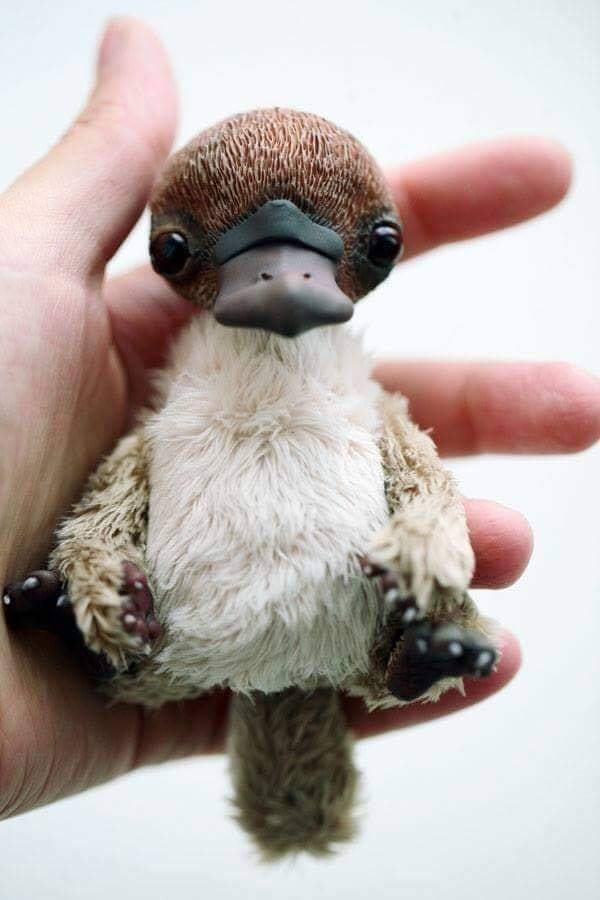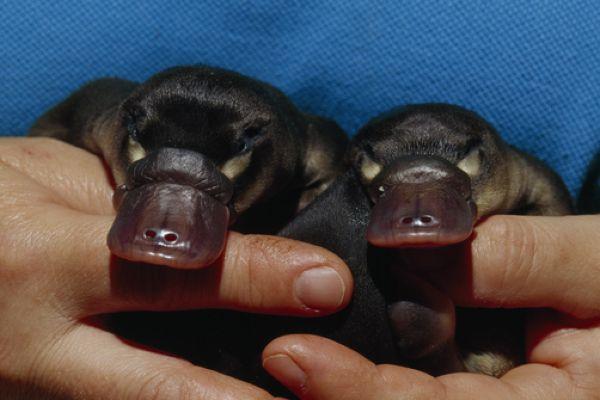

Producing milk takes effort and energyĪs anyone who has breastfed a child will know, it's tiring - and you get hungry. They can produce tailor-made milk with different nutrients from different teats so they can feed, say, a newborn joey at the same time as feeding her older brother who is about to leave the pouch. Macropod (big foot in Latin) marsupials like kangaroos and wallabies are capable of an even more remarkable feat. That's because joeys and puggles are so undeveloped - they have to rely on iron-rich milk to construct proteins to build, carry and store oxygen until their liver matures. Interestingly, iron levels in marsupial and monotreme milk are three times higher than in placental mammal milk. Carbohydrate levels peak in mid to late lactation and then decrease to weaning. This peaks towards the end of lactation when the young are weaned. As the joeys and puggles get bigger, it becomes more concentrated, with more protein and fat.

Monotremes and marsupials produce different milk at different stages of lactation.Įarly on, their milk is more dilute. The red-tailed phascogale (Phascogale calura) - a tree-living insect eating marsupial - can give birth to up to 13 young but females only have eight teats. In some species, the first hours are brutal as more young can be born than there are teats for them, and only those able to latch on in the first few hours can survive. Newborn marsupials have to seek out and firmly attach themselves to the teat. The highest number of mammary glands recorded in a marsupial is 13, in the gray short-tailed opossum (Monodelphis domestica), while the largest surviving marsupial, the red kangaroo (Osphranter rufus), only has four teats.Īs you'd expect, teat numbers align with the maximum number of young a marsupial mother can sustain. The larger the marsupial, the fewer teats they have. For marsupials, the number of teats equates to the number of mammary glands.
#PUGGLES PLATYPUS BABY SKIN#
While marsupials have teats for their joeys to suckle from, monotremes have milk patches which secrete milk directly onto the pigmented skin of the areola where their baby puggles can lap the milk from the pores. These specialised glands evolved 166-240 million years ago and have diversified into a wide range of sizes and shapes. It can be a fight to find a teatĪll mammals possess mammary glands. Their milk likely has chemicals serving to attract newborns to the teat even though they have very little sensory or movement ability at this stage. Their milk not only supplies nutrients for sustenance, but also has factors essential for growth and immunological protection.

To overcome this, female marsupials and monotremes produce truly remarkable milk. Most of their development happens outside the womb or egg. When a wallaby gives birth to a tiny pink joey, it's the equivalent to us giving birth to an eight week old foetus.

Marsupials, too, give birth to underdeveloped young. When an echidna egg hatches, the baby is very underdeveloped. Monotremes are the only mammals to lay eggs. The other three echidna species live on the island of New Guinea. We have around two-thirds of all living marsupial species, and two of the five remaining monotreme species on the planet - the platypus (Ornithorhynchus anatinus) and short-beaked echidna (Tachyglossus aculeatus). But our country is far better known for our marsupials and monotremes, which have different reproductive strategies to placental mammals. In Australia, we have many placental mammal species, like bats and native rodents. Some users evidently understood the article to be true, posting comments such as: “your kids would love to see this”.Senior lecturer, Charles Sturt UniversityĪssociate Professor, Biology, Zoology, Animal Science, Western Sydney University They have also shared the article and picture on their Facebook page here, promoting over 4,000 shares. The article is tagged as “satire” at the end of the piece – but this is not clear to a new visitor to the site. Real baby platypuses or "puggles" look somewhat different to this sculpture, as shown here and here.Ī website called People of Lancaster even used the photograph to illustrate an article (see here) about a duck-billed platypus allegedly being born at a zoo. I also do illustration, portraits, caricature, comics, animation, scale modeling, FX makeup, cosplay, miniature sculpting and art dolls.” specializing in illustration and animation. Matić-Kuriljov’s about page describes his work: “Graduated from the Faculty of Applied Arts in Belgrade in 2010.


 0 kommentar(er)
0 kommentar(er)
